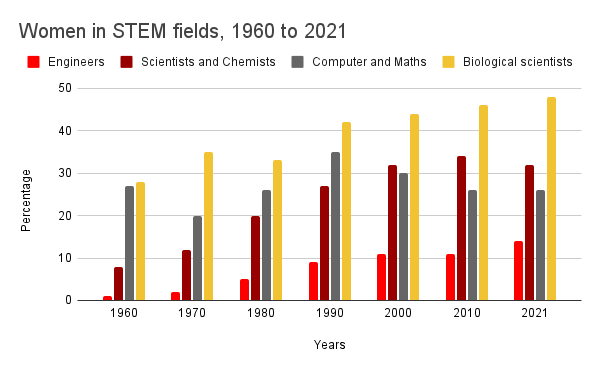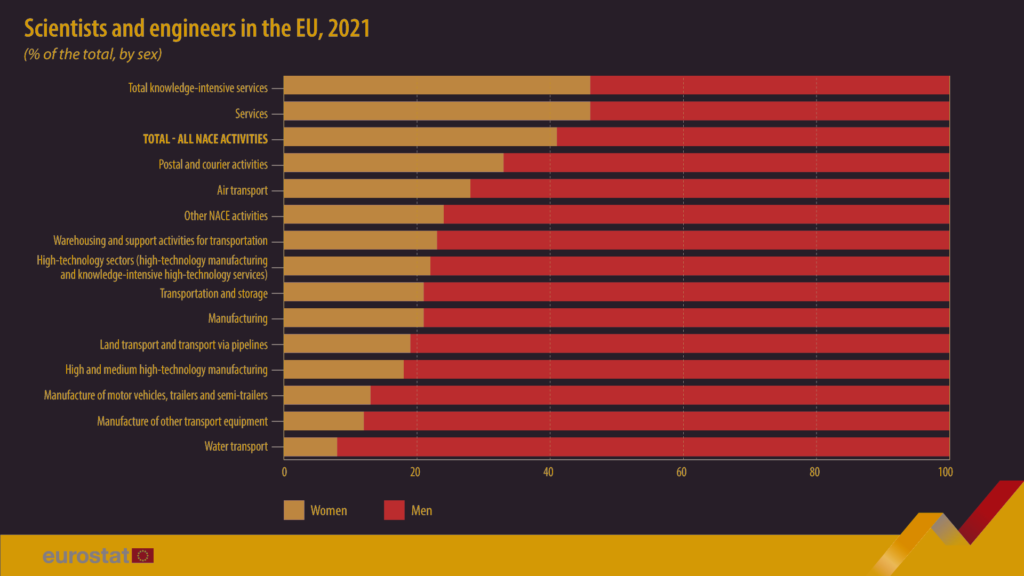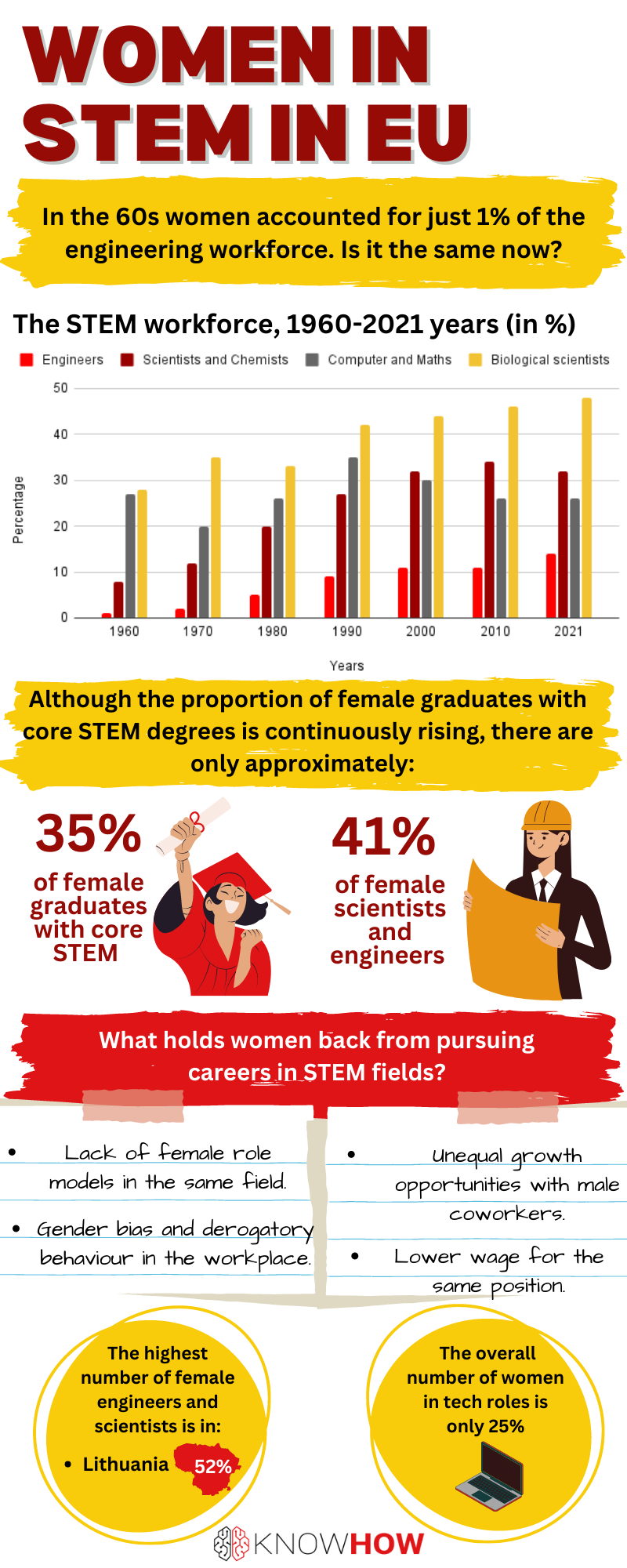Since the STEM (Science, Technology, Engineering and Mathematics) field’s inception in the 18th century during the Age of Enlightenment, many academics and policymakers have observed that these subjects have remained predominantly male with historically low involvement among women. Is it the same in current times? On International Women’s Day Distrelec looks closer at how the role of women in the workplace, mainly in STEM fields, has evolved over time.
History of women in STEM
It is hard to believe that roughly 60 years ago, women accounted for just 1% of the engineering workforce. Luckily, we live in different times now and there is no doubt that the number of women in STEM has increased since the 60s.
Many sources prove that computer science, engineering, and technology fields demonstrate the largest gender disparities among current students, graduates, and workers. Although there is some progression, there are still disproportions and not so many women decide to choose STEM fields. Some of the disciplines were/are more popular than others and as the chart below presents, for example, women tend to choose biological science focused subjects over engineering and computing.

Popularity by STEM fields
Over the past ten years, the overall number and proportion of women in engineering professions has grown and Europe had almost 7 million female scientists in 2021, 369 800 more than in 2020, making up 41% of all jobs in science and engineering. This is encouraging information, but in the statistical classification of economic activities in the EU, women were underrepresented across all activity sectors.
The Eurostat article from 2023 proves that although there was a better female representation in the services sector (46% of scientists and engineers were female), there were more men than women. Taking into account other areas, there were only 28% female scientists and engineers in the air transportation sector, but just 21% of those in the industrial sector. In the least popular areas, just 8% of workers in the field of water transportation were women, compared to 12% in the manufacturing of transport equipment and 13% in the motor vehicle industry (see Figure 2).

To complement Eurostat data, we had a look at a McKinsey report from January 2023 that focuses on European companies showing that the average women’s share within tech roles across European companies is only 22%.
McKinsey analysed the specific roles in the tech industry and the highest female participation rate in product design and management is 46% (e.g product manager), while only 15% in compute and operations roles (e.g. system engineer, incident manager) and 8% in DevOps and cloud roles (e.g. cloud, DevOps or site reliability engineer) (see Figure 3).

When we take into account women who work at tech companies, the statistics are only slightly more positive. There are 37% of female employees in European tech and tech-related enterprises, with the largest percentages in social networking organisations (50%) and e-commerce companies (46%) (see Figure 4). However, the overall number of women in tech roles is only 25% (McKinsey, 2023).

Women in STEM by countries
It varies by country how many women are choosing STEM fields. In Europe, there was a wide range of female scientist and engineer representation. According to Eurostat, the EU had 6.9 million female scientists in 2021, compared to about 6.6 million female scientists and engineers in 2020.
In 2020, the top countries in Europe with the highest number of female engineers and scientists were Lithuania, Portugal and Denmark with 52%. In 2021, again, the highest shares scored Lithuania with 52% and then Bulgaria, Latvia, and Portugal (all 51%), while the countries with the lowest proportions were Luxembourg (35%), Germany (34%), Italy (34%), Hungary (33%) and Finland (31%).

Conclusion
Unfortunately, although the proportion of female graduates with core STEM degrees is continuously rising, in the EU only approximately 35% of graduates in the field are women. Mainly what holds women back from pursuing careers in STEM fields is:
- Lack of confidence.
- Lack of mentors/ senior support.
- Lack of female role models in the same field.
- Difficulty balancing work & other responsibilities.
- Gender bias and derogatory behaviour in the workplace.
- Unequal growth opportunities with male coworkers.
- Lower wage for the same position.
This demonstrates that efforts must be made to encourage women to pursue these fields of study and make the transition to the workforce. Hopefully in the future the numbers will differ less significantly than now.
At Distrelec, where the main focus is on technology, engineering, automation, manufacturing and electronics, 46% of workers are women. Across the business women make up 49% of the category management team. Also, out of 27 people that have been promoted in the last twelve months, 13 were women.











